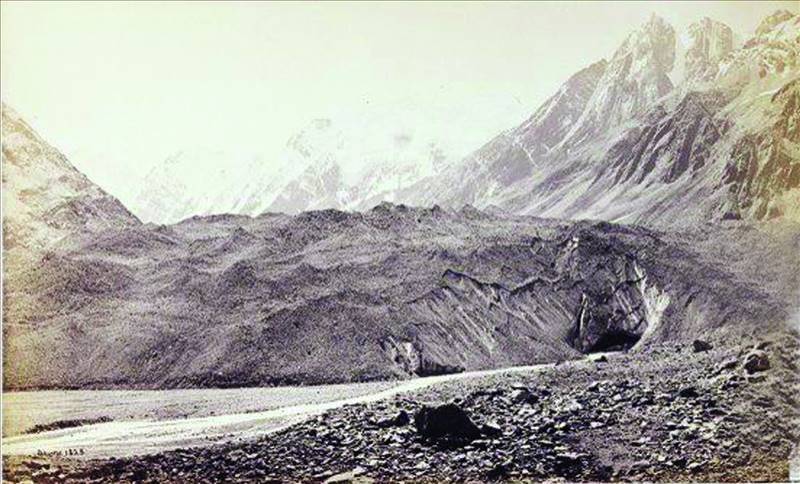
This dramatic view of a glacier was captured by the English photographer Samuel Bourne. From July to December 1866, he toured part of the Himalayan region. Bourne was fascinated by the mountains and captured images of them on glass negatives.
He wrote about his journey in The British Journal of Photography, outlining his route and in some cases describing the scenes he photographed. Of this glacier he wrote: “The stupendous glacier…fills up completely the head of the valley – an enormous block of ice hundreds of feet in thickness and several miles long (as far as I could judge, probably ten or fifteen), but I did not explore it. The stream issues at its foot (a full-blown river at once) out of an immense ice cave, called by the natives the “cow’s mouth”…I was fortunate enough in having a fine, clear morning following the day of my arrival at this spot, and was thus enabled to obtain three excellent negatives of the cave, the glacier, and the peaks by which it was surrounded.”
This photograph is one of three taken of the great glacier at the head of the Baspa Valley. It is the source of the Baspa river. This image is taken at a mid-distance away from the cave from which the river flows. The glacier is surrounded by mountain peaks tipped with snow.
He wrote about his journey in The British Journal of Photography, outlining his route and in some cases describing the scenes he photographed. Of this glacier he wrote: “The stupendous glacier…fills up completely the head of the valley – an enormous block of ice hundreds of feet in thickness and several miles long (as far as I could judge, probably ten or fifteen), but I did not explore it. The stream issues at its foot (a full-blown river at once) out of an immense ice cave, called by the natives the “cow’s mouth”…I was fortunate enough in having a fine, clear morning following the day of my arrival at this spot, and was thus enabled to obtain three excellent negatives of the cave, the glacier, and the peaks by which it was surrounded.”
This photograph is one of three taken of the great glacier at the head of the Baspa Valley. It is the source of the Baspa river. This image is taken at a mid-distance away from the cave from which the river flows. The glacier is surrounded by mountain peaks tipped with snow.

